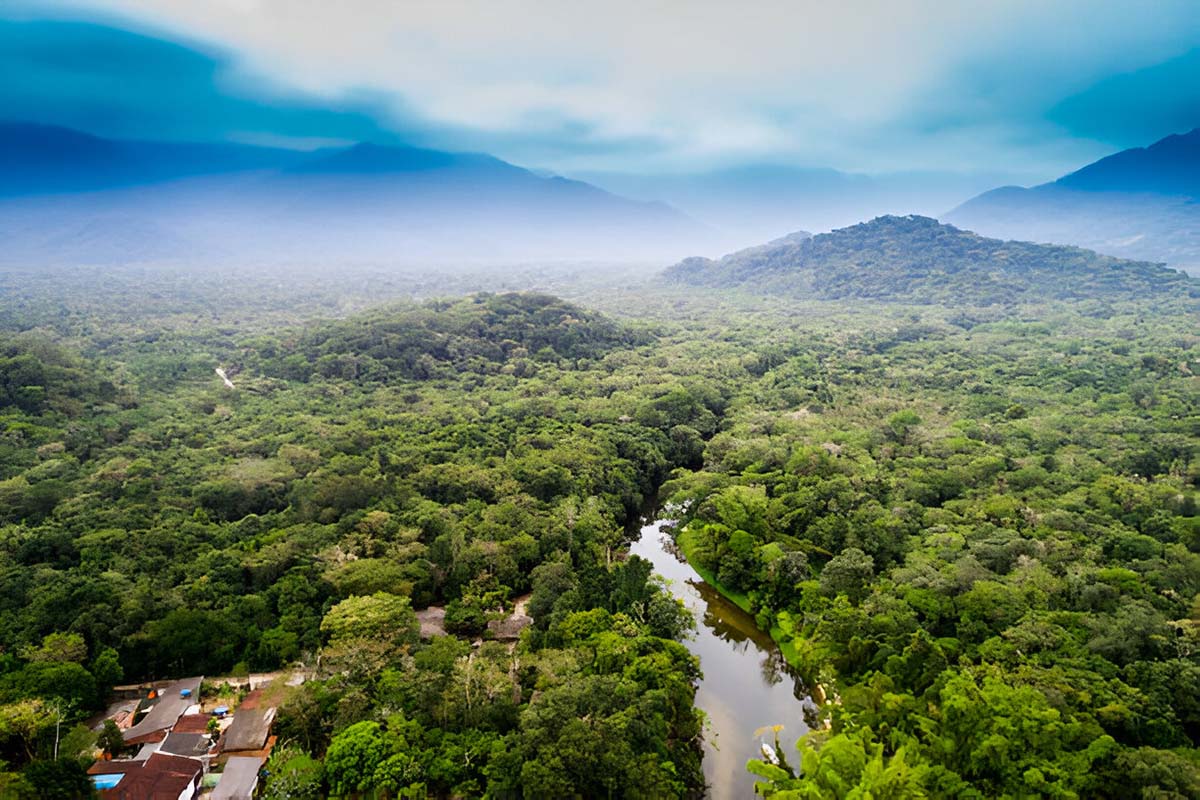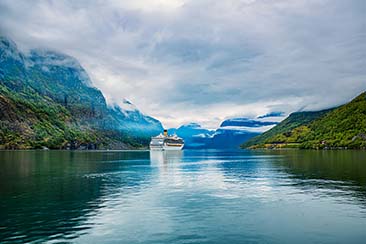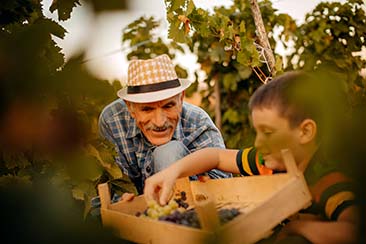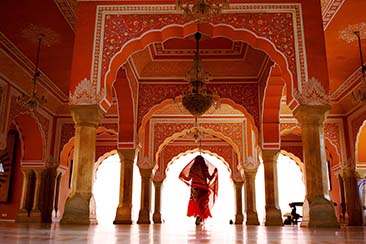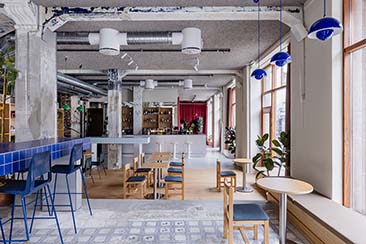Travelers are craving fresh and new experiences in 2025. “I would dub 2025 as the year of intentional travel,” states Christina Bennet, a consumer travel expert for Priceline, who goes on to note that many travelers are in search of “bespoke experiences.”
For those who are in search of meaningful and adventurous hidden gem destinations, the Amazon rainforest is an ideal location, with more than a few festivals that unveils the culture and history of the area. From the unique celebrations and activities that can be found in Peru to those that take place in Brazil, festive events can be found far and wide throughout the year.

La Fiesta de San Juan
As the sixth largest city in Peru, Iquitos is a unique location that offers a variety of cultural experiences. Inaccessible via road, Iquitos is reachable by plane or river only, though despite being a bit out of the way, it’s certainly worth the journey — especially when it comes to the unique cultural experiences that the location has to offer.
La Fiesta de San Juan is just one festival that is celebrated each year in Iquitos on 24 June. The festivities center around Saint John the Baptist, though is “deeply intertwined with indigenous traditions, spirituality, and the bountiful natural environment,” a LinkedIn article by Christian Yaranga highlights.
La Fiesta de San Juan (also referred to as the Festival of San Juan) takes place throughout several locations in the Peruvian Amazon. This includes areas such as Madre de Dios, as well as Loreto, Ucayali, and San Martin, which highlights the prevalence of the event. How to Peru notes that the San Juan Festival typically begins a few days before the 24th, though also continues beyond the date a few days, too.
Iquitos is noted to be a main center of the festival. While the day itself can be relaxed in nature, the Amazonian delicacy known as juanes (bijao leaves that contain rice, chicken, egg, and olive) are noted to be the choice food, as the dish is said to resemble the head of Saint John. Drinking, lively discos, traditional dance, and relaxation are all at the heart of the celebration, which is noted to be more of an informal affair.

Iquitos Beyond Festivals
Beyond festivals, Iquitos offers further unique experiences for the intentional traveler. Traditional ayahuasca ceremonies, for example, can provide a unique experience through a psychoactive beverage. For many, ayahuasca has the potential to evoke a powerful and transformative encounter for those who choose to partake.
Ayahuasca rituals are typically led by a shaman, and can have a range of benefits. For example, many may enter an ayahuasca ritual in order to gain a more open mindset, connect with nature, or even heal past traumas (to highlight a few). However, it’s crucial to understand what is involved before plans are made.
Travelers can connect with the traditions of the Amazon through an ayahuasca retreat in Iquitos, which has the potential to result in a life-altering experience. These transformative rituals are often performed by multigenerational Shipibo shamans, with other aspects of the experience that can include defined intentions, a small and intimate group setting, and personalized attention in order to ensure that the retreat is tailored to your needs.
In terms of the ayahuasca itself, it’s important to note that while there can be adverse effects involved (such as vomiting, diarrhea, fear, and paranoia), the beverage can also provoke feelings of euphoria, visual and auditory hallucinations, as well as “mind-altering psychedelic effects,” states Healthline. It’s also mentioned that these effects are dependent on the dose of the ayahuasca, though effects are felt within 20 to 60 minutes and typically last from two to six hours.
Due to the nature of the experience, it’s necessary to make plans with reputable shamans and programs, which will ensure you’re signed up for a genuine experience.

Sine Do End Dari, Madre de Dios
Travelers who wish to experience more of the Peruvian Amazon can find other celebrations. In Madre de Dios, the Sine Do End Dari Festival provides opportunities for visitors to learn more about local folklore and crafts, as well as indulge in the local culture.
The Sine Do End Dari Festival takes place on September 27th (the same day as the International Day of Tourism). A 2022 press release about the festivities details the events that took place that year, which included typical Amizonian cuisine as well as traditional music, and even costume contests.
According to Y Tú Qué Planes, the Sine Do End Dari Festival also includes the opportunity to visit local attractions in Madre de Dios, such as the Biodiversity Lookout, where one can take in the rich green landscape of the area. The festivities are also a great way to check out local craftsmanship, with basketry workshops and exhibitions of Yine and Hrambut weaving present as well.
Y Tú Qué Planes goes on to point out that the district is home to seven different groups of native peoples, and that nine different native languages are spoken in the region as a result. With that in mind, there’s no question that the festival serves as a unique way to learn about the native culture and way of life unlike any other.

Brazil’s Parintins Festival
Brazil contains around 60% of the Amazon rainforest, and there are no shortage of festivities that celebrate the country’s vibrant and history-rich culture. Located in the Amazonas region of Brazil at Bumbódromo, the Parintins Folklore Festival (also simply referred to as ‘Festival’) takes place each year for three days in late June. Visit Brasil notes that the legend of the boi-bumbá is at the center of the Parintins Festival.
Deeply rooted in Brazilian history and culture, the Parintins Festival focuses on a local folk tale, which surrounds the story of a resurrected ox. “It tells the story of an ox that is killed, revives, and enchants everyone with its joy,” Visit Brazil explains. Competition is also an important aspect of the festivities that has ties to indigenous culture — according to Visit Brasil, the festival showcases a competition that takes place within the local community via a theatrical show, which “mixes dance, music, and a lot of emotion.”
The competition itself involves the Garantido and the Caprichoso, which are represented with different colors and symbols. Each, Visit Brasil notes, illustrates a story native to the Amazon via their presentations.

Carnival — a Connection to Nature and History
A connection with nature is a powerful theme with respect to the Amazon rainforest, and can often be found reflected in festival celebrations that take place far away from the rainforest itself. While Rio de Janeiro, Brazil, is located on the coast of the country, annual Carnival celebrations highlight the importance of the Amazon rainforest as well as the country’s vibrant indigenous communities, through depictions of vibrant wildlife that can be found in powerful parade floats to traditional music.
A Canadian Geographic article by Robin Esrock highlights the popularity of the events, and makes note that up to a million tourists visit the city when Carnival takes place. “Nobody is going home disappointed by the spectacle, although your stamina will surely be tested,” Esrock writes. It’s important to realize that while the world-renowned event officially occurs over the course of a week, celebrations often stretch beyond this. In 2025, the festivities are set to take place at the end of February and into early March, and there is no shortage of things to do and see.
Travelers who choose to make the journey to Rio de Janeiro for the Carnival celebrations have plenty to look forward to. Taking place at the height of the summer season, Rio serves as the ideal location for those who wish to escape to a warmer climate in February, though Carnival activities can help create a truly memorable time.
Creative choreography, traditional dances, music, colorful decor, elaborate costumes, parties, and parades are all features that define the events of Carnival. The highlight attraction for many, however, is the Rio Samba Parade, where floats, dancers, and music are put on display for all to enjoy. According to the Rio website, samba schools are key to the parade, with each school responsible for the presentation of a theme, “which is portrayed by a team of musicians, samba dancers, and well-decorated floats.”
These festivities take months of preparation, though ultimately builds up to an experience that is truly unique to this region of the world.
One KLM Airlines article highlights the events that take place throughout the celebration, and expands on how the activities relate to Brazil’s storied history. Colorful and vibrant dances that feature the samba, for example, serve as just one aspect of the traditional festivities that came about in a unique way.
The article explains that the music’s origin is largely due to migrants, who relocated to Rio towards the end of the 19th century and brought many aspects of their way of life with them. “The boom of the coffee industry and the abolition of slavery created large migration flows in Brazil,” KLM explains. This contributed greatly to the culture of the area, with unique music, dances, and traditions that can be observed in carnival celebrations today.
The Amazon rainforest is a distinctive and special part of the planet, with nature and long standing traditions that are reflected in various celebrations. For travelers who wish to experience and embrace the culture and history of the area, events range from those such as La Fiesta de San Juan to Brazil’s Carnival.
